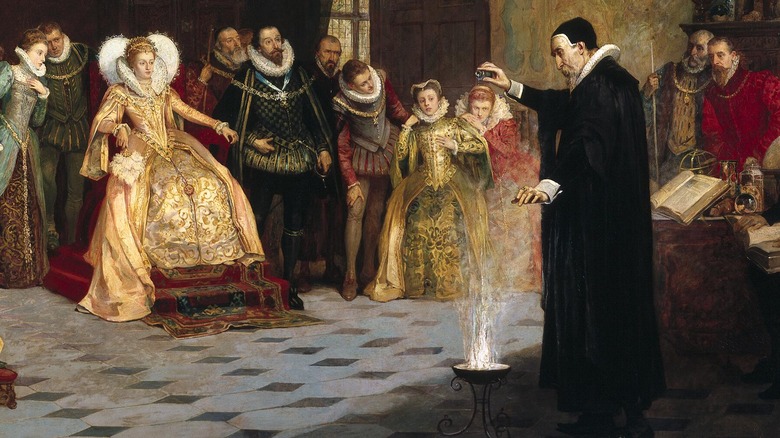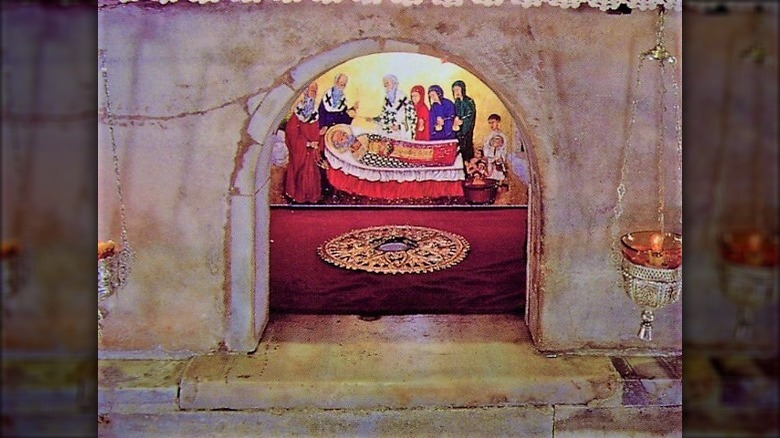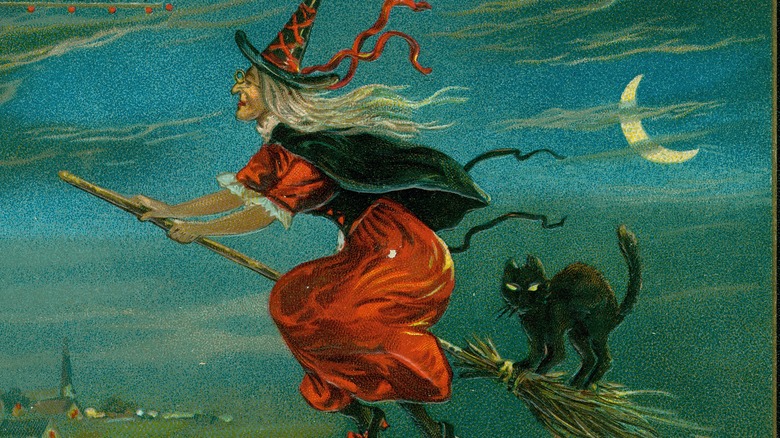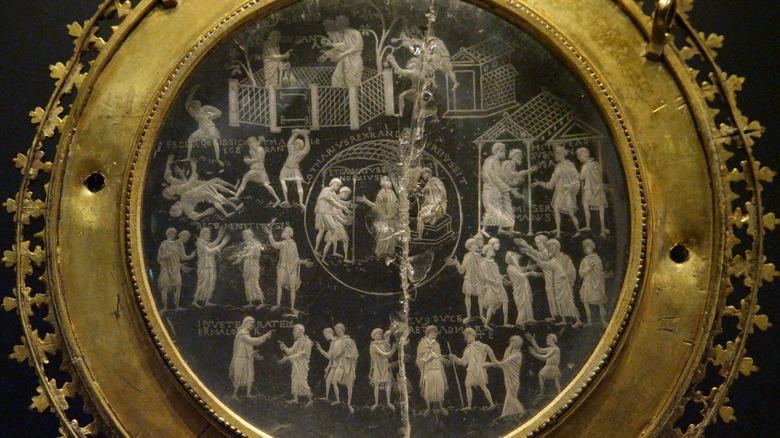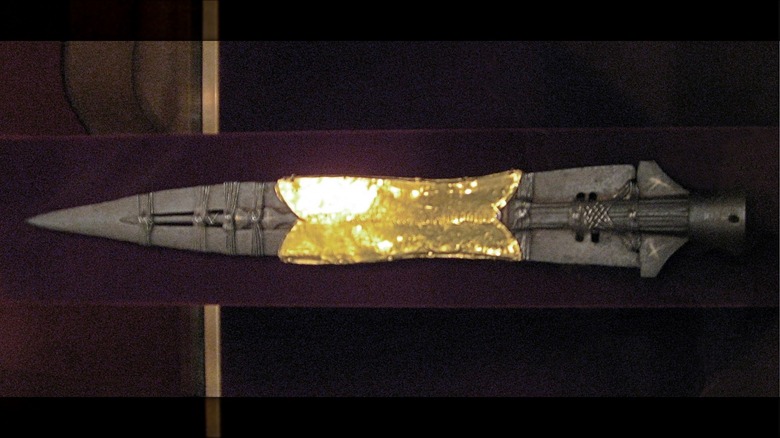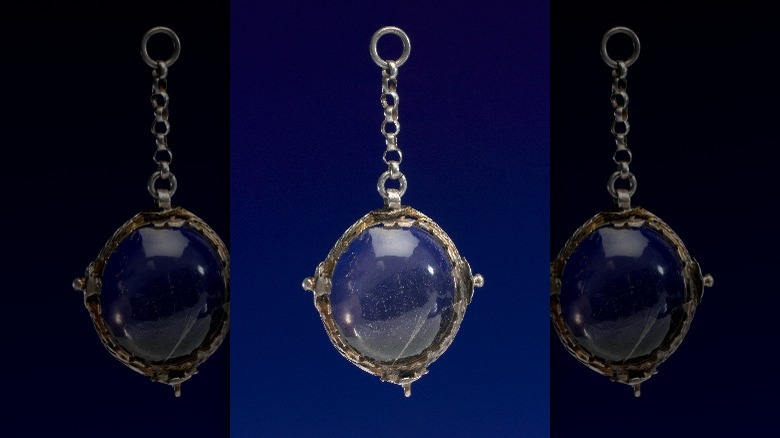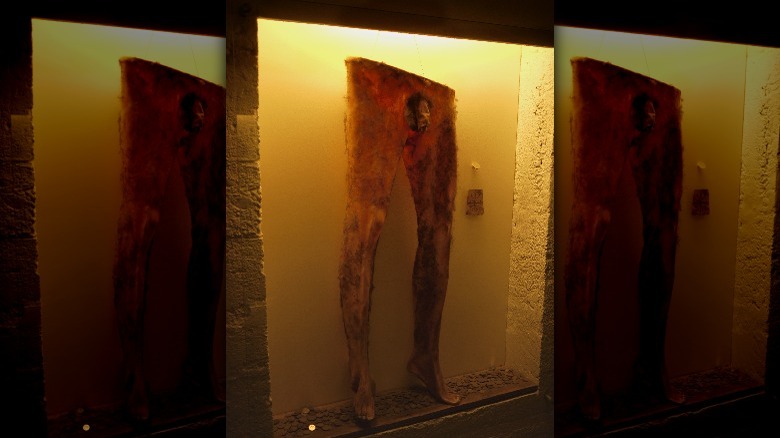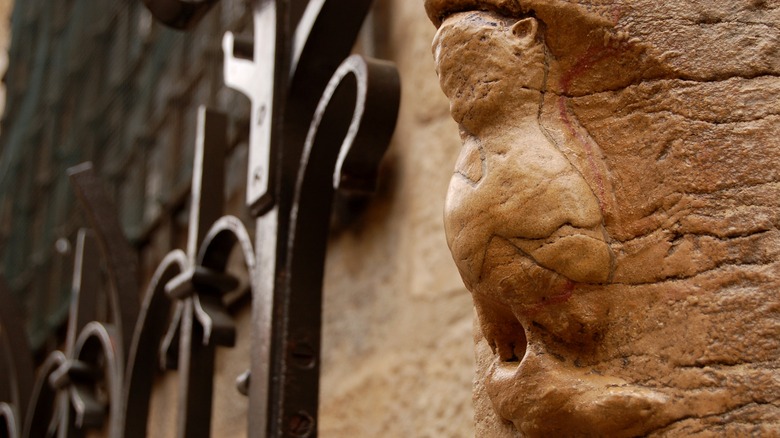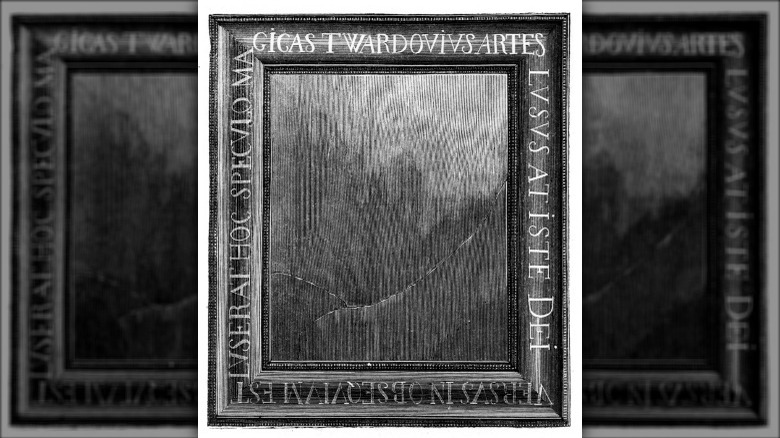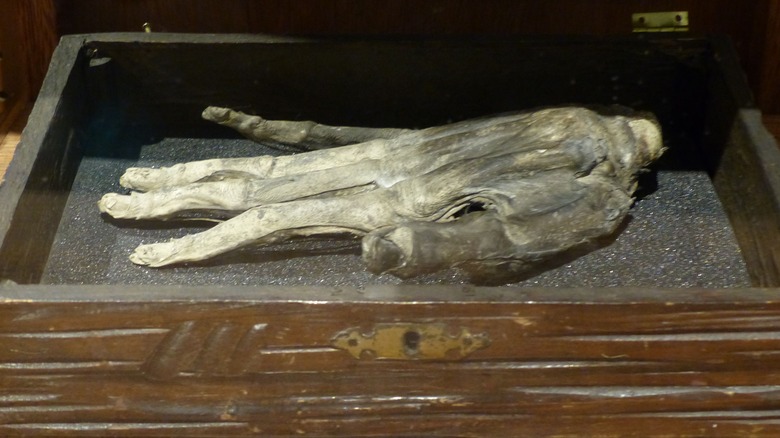10 Real-Life Objects Rumored To Have Mystical Powers
History and legend are full of objects that are said to have had magical or miraculous powers, from numerous magic swords like Excalibur to strange religious relics reputed to have the ability to heal or bring blessing. Unfortunately for those who would like to believe in the existence of magic, many of these items belong strictly to the realm of legend, lost somewhere in the distant past, or replaced with some unlikely replica whose carbon dating belies its reputed origins.
There are, however, a number of items that, unlike King Arthur's sword or the shield of Achilles, exist in the material realm in the present day and not simply in the world of make-believe. These are items that are real and that you can visit, most of them in museums. And, at least according to legend, they possess some kind of magic power, whether that be to summon the dead, heal the sick, or grant eternal wealth. The items themselves are definitely real, though their authenticity and actual mystical powers are a little more questionable.
Tomb of Saint Nicholas
Saint Nicholas of Myra (yes, the Santa Claus one) is an extremely popular saint among both the Catholic and Orthodox churches, completely separate from any idea of him coming around to give presents and eat cookies. His popularity is partly tied to the many accounts of miracles he is thought to have performed both while alive and after. One miracle that he is thought to have continued to perform long after his death in the fourth century is the production of a healing liquid that is drawn from his tomb every year on May 9.
Nicholas was originally buried in Myra, the Turkish town where he served as a bishop, but after Muslim forces invaded the area in the 11th century in a way that threatened his tomb, a popular pilgrimage location, sailors from Italy came to steal the body and bring it back with them to their town of Bari. The act of moving Nicholas' bones from Turkey to Italy is celebrated each year on May 9, in a celebration called the Feast of the Translation. During this festival, a mysterious liquid that has been called manna is extracted from the tomb and mixed with water so that it can be bottled and distributed to pilgrims. The manna is said to be sweet-smelling and to contain the power to heal. Scientific examination of the manna has found the liquid to be water, most likely condensation, but even proximity to the holy relics of Nicholas is enough for some believers to trust in the manna's power.
[Featured image by LooiNL via Wikimedia Commons | Cropped and scaled | CC BY 3.0]
Olga Hunt's broomstick
The Museum of Witchcraft and Magic in Cornwall in the U.K. has been collecting and exhibiting artifacts related to British folklore, ritual magic, and superstition since the 1960s. Of all the objects most associated with witchcraft, perhaps the most iconic is the witch's broom, so it's only natural that the museum has some in its collections. One such broom is identified by the museum as a "painted besom broom," which it describes as having candy-cane-like spiral stripes of yellow, blue, red, and green down the handle, in addition to having a shoulder strap and painted bristles.
The broom is said to have belonged to Olga Hunt, a woman who identified as "a writer, artist, and sensitive" and who lived in Devon in the U.K. sometime in the 20th century. According to the story, Hunt would mount up on her broom during the full moon and ride it around over the rocks in Dartmoor, frightening campers and startling any couples who might have gone out to the site for some alone time. The question, of course, is, was she riding it like a Quidditch player from the books, or like a Quidditch player from an IRL college team? You decide.
Other items from the museum's collections include a snake-shaped wand and a cauldron that exploded when three witches allegedly tried to summon a spirit with it. This seems to indicate that the cauldron is possibly a little bit magical but not as much as one might hope for in a cauldron.
Lothair Crystal
Lothair II was the king of the Frankish kingdom of Lotharingia and a descendant of Charlemagne. He was married to Theutberga, the daughter of a powerful count. The problem was that their marriage was producing no offspring, while Lothair's mistress had four children by the king. As a result, Lothair tried to divorce Theutberga. Marrying his mistress and legitimizing his children was vital to avoid a succession crisis in the kingdom. When the pope nixed this idea, Lothair and Theutberga reunited, and as a sign of his sincerity, the king is believed to have given her a precious crystal that has come to be known as the Lothair Crystal or the Susannah Crystal.
The crystal is a disc of quartz about 4.5 inches across engraved with the story of Susannah and the Elders from the apocryphal Book of Susannah in eight separate panels. An inscription on the crystal says it was commissioned by Lothair, King of the Franks, and tradition says it was made for him by Saint Eligius, patron of goldsmiths. It was believed that the crystal contained mystical protections against any harmful magic that might be keeping Theutberga from getting pregnant, in a bid to protect the royal marriage. Magic or not, the crystal didn't work, as Theutberga sought an annulment of her marriage less than a year later, and Lothair died on his way home from getting permission from the pope to dissolve the marriage, leaving the throne to his brother and his domain divided among the Frankish kingdoms.
[Featured image by Ashley Van Haeften via Wikimedia Commons | Cropped and scaled | CC BY 2.0]
Spear of Destiny
The Spear of Destiny, also known as the Spear (or Lance) of Longinus, is — according to Christian legend — the spear used by the Roman soldier who pierced the side of Jesus as he was hanging on the cross, as seen in the Gospel of John. There are multiple real-life relics that are identified as the Holy Lance that can be visited in various places around the world, including of course the Vatican, but perhaps the most notorious spearhead is the one at the Hofburg Palace in Vienna, Austria. This artifact is the one attached to the legend that the possession of the spear allows its holder to steer the destiny of the world, hence the name Spear of Destiny.
In this version of events, possessors of the spear included various Roman and Holy Roman emperors, including Constantine the Great and Charlemagne. Perhaps its most infamous owner, however, was Adolf Hitler, whose obsession with occult powers led him to take the spear out of the Hofburg museum after conquering Austria. The spear was found with the other plundered imperial items of Austria buried under the Nuremberg Fortress the same day that Hitler killed himself in 1945, and it was returned to the museum the next year. If the legends are true, one skilled thief might be able to steal for themselves the ability to conquer the world, but at the risk of losing everything if the spear slips away from them. You'll have to decide for yourself if it's worth it.
[Featured image by Weltliche Schatzkammer Wien via Wikimedia Commons | Cropped and scaled |CC BY-SA 3.0]
John Dee's crystal
John Dee was a mathematician and astronomer, but he's perhaps best known these days as a magician, astrologer, and royal advisor to Queen Elizabeth I. Dee believed — or at least claimed — that he frequently spoke with angels, who taught him their language, and the archangel Uriel told him how to make the philosopher's stone, the final goal of all alchemy. As part of this angelic instruction, Dee said Uriel had given him a purple crystal on a chain in November 1582. The crystal was said to be able to cure illness and allow its holder to see the future by looking for the shapes of people and objects in the stone. Dee passed the crystal to his son, who then gave it as a thank-you gift to an alchemist and physician who had helped cure the younger Dee's liver disease. This alchemist, Nicholas Culpeper, used the crystal in aid of healing for a number of years until 1651, at which point, according to Culpeper, a demonic ghost popped out of the stone.
Other allegedly magical items from the collection of John Dee include a black-glass mirror that Dee used as a scrying glass, which is essentially a tool for trying to perceive the future, like a crystal ball. Since the 1930s, these mystical items have been part of the Sir Henry Wellcome Museum Collection, which itself has been on permanent loan at the Science Museum in London since 1997.
[Featured image by Wellcome Images via Wikimedia Commons | Cropped and scaled | CC BY 4.0]
Rheumatism potatoes
The Pitt Rivers Museum at the University of Oxford in the U.K. has a large collection of extremely old potatoes. If you assumed that this is because they're some kind of potato museum, you are incorrect. In fact, most of these potatoes were donated to the museum in the latter parts of the 19th century, as the academic study of folklore became more systematized and widespread. These potatoes, you see, are magic potatoes that can heal your rheumatism.
"Rheumatism" is a somewhat archaic term that historically encompassed a number of different ailments caused by inflammation in the joints and muscles, such as arthritis or gout. In the time period after potatoes were introduced to Europe from the Americas, it became a tradition in the U.S. and Britain that one could ease their rheumatic pain by carrying around a raw potato in their pocket. The potato might be carried around for years and years and might even be given its own special little bag where it could soak up the joint pain like a sponge. As the potato shriveled and shrank over time, so too would the rheumatic ache. The one rule, however, is that the potato had to be stolen, whether from someone's field, a market, or wherever. That said, it's still probably not a good idea to try to snag one of these century-old spuds from the Pitt Rivers Museum, even if you've got the gout really bad. They make medicines for those kinds of things these days.
Necropants
The Museum of Icelandic Sorcery and Witchcraft in Hólmavík, Iceland, contains a number of strange items associated with Icelandic witchcraft from the age of the Vikings, including a model of the life cycle of the tilberi, a bizarre creature summoned with a stolen human bone and desecrated communion wafers in order to steal milk from the witch's neighbor and suckle from a weird nipple that would grow on the summoner's thigh. But maybe even stranger than that are the world's only surviving pair of nábrók, popularly known as "necropants" in English.
These pants are made from human leather, the leg skin of a friend of the sorcerer who has recently died of natural causes. The pants must be made by skinning the friend's corpse without any rips or tears, so, yes, these pants have all the parts on them. The magician has to put the pants on his bare body, steal a coin from a widow, and then stash the coin in the skin pants' natural front pocket, so to speak. If the magician put the coin in there together with a scrap of parchment with a magic word on it and didn't remove the original coin, the human skin coin purse would continuously fill with more gold coins until the magician had achieved unimaginable wealth. Unfortunately, the necropants would, over time, completely fuse with the magician's real legs until the two were indistinguishable. Perhaps it is for the best that the necropants at the Hólmavík museum are just a meticulously recreated replica.
[Featured image by Bernard McManus via Wikimedia Commons | Cropped and scaled |CC BY 2.0]
Owl of Dijon
The French city of Dijon (yes, like the mustard) in the region of Burgundy (yes, like the wine) is home to a cathedral built in the 13th century, and sometime during the addition of a chapel around the end of the 15th century, a craftsman added a cute decorative touch: a stone owl, less than a foot tall, carved into the corner of the church about six feet off the ground. Why an owl? No one knows, but there are a number of theories. In the time since then, it has come to be believed that anyone who reaches up and rubs the owl's face with their left hand will be granted a wish. In the centuries since the owl's installation, uncountable thousands have rubbed the stone bird's face until now it's barely recognizable as a bird.
This wish-granting owl of the Notre Dame de Dijon has since become a common cultural symbol of the city, with the alley that runs past it known as the Rue de la Chouette, or "Owl Street" (though, notably, the street is older than the church). The owl is a local mascot for both sports teams and tourism, with a trail leading to points of interest marked with plaques featuring cute little owls. This path of a staggering 1,600 owls on the sidewalk will lead visitors past the primary locations of note in the historic part of town.
The owl of Notre Dame was damaged in 2001 by apparently bird-hating scofflaws, but the bird was repaired with no apparent loss of magic.
[Featured image by StéphaneMarie via Wikimedia Commons | Cropped and scaled | CC BY-SA 3.0]
Twardowski's mirror
Polish legend tells of a 16th-century nobleman named Pan Twardowski who sold his soul to the devil in exchange for wisdom and mystical powers. You know, the classic Faustian deal. Various versions of his legend tell of him riding around on a rooster, attending witches' sabbaths, running into his own doppelganger, and ending up stuck on the moon when he tries to cheat the devil out of his soul. Twardowsky became an extremely popular folk hero for the Polish people, and his story has been adapted numerous times in literature, ballet, art, and film. Modern animated versions show the mage flying through space in a starship.
Further legend says that Twardowski once held a seance at the request of the Polish king, Zygmunt August, whose wife, Barbara Radziwłłówna, had recently died. One of the instruments used in the seance was a mirror belonging to Twardowski and presumably charged with diabolical power. Allegedly, the seance was at least partially a success, with Barbara Radziwłłówna appearing briefly in the mirror's glass in sight of the king, giving him a glimpse of his lost beloved.
This very mirror is thought to reside these days in a church in Eastern Poland. Someone, probably the clergy of the church itself, commissioned a wooden frame to be built around the metal mirror. The frame is engraved with a Latin text that reveals its turn from diabolical to godly service: "Twardowski played with this mirror, practicing arcane arts; now it serves God."
Hand of Glory
If you've read the Harry Potter books or Hellboy comics, or if you've seen the 1973 version of "The Wicker Man," chances are good that you've encountered the strange magical device known as the Hand of Glory. European magicians believed that if you cut off the hand of a criminal as they hung from the gallows. The hand is then dried and stored in a jar with salt and other preservatives for two weeks until it is properly pickled, and then heated in the sun or a roaring oven until it is completely dried. The hand is then dipped in wax made from the fat of another hanged man and made into a candle. In some versions, the hand is simply made to hold the candle, while in the more popular version, each of the hand's five fingers is made into a candle and lit.
Why would you make this? Well, according to legend, such a macabre candle was an essential tool for burglars. When the hand's wicks were lit, the inhabitants of the house about to be broken into would all be paralyzed as if dead, all the locks on the house would break, and all the doors would fly open. If any finger didn't light, it indicated that some member of the household was still awake. Other tales tell of hands breaking rocks to reveal hidden treasures.
The only known remaining Hand of Glory is preserved at the Whitby Museum in England, which is of the five-fingered candle type.
[Featured image by Badobadop via Wikimedia Commons | Cropped and scaled | CC BY-SA 4.0]
